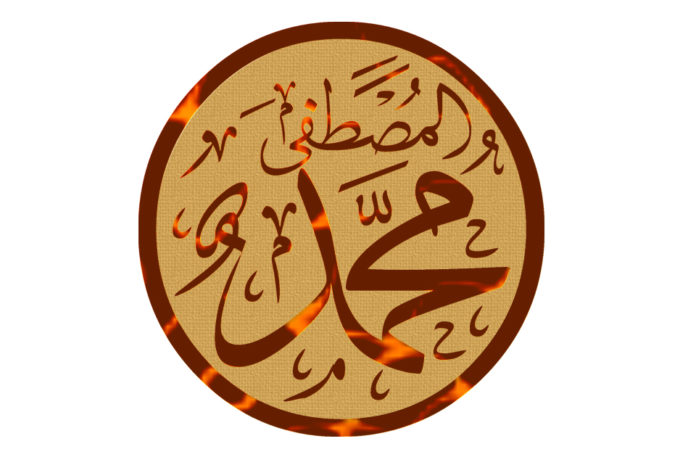Key:
(B) = Bukhârî;
(SM) = Muslim;
(BQ) = Bayhaqî, Dalâ ́il an-Nubuwwah;
(M) = Munâwî, Sharh Shama´il al-Muhammadiyyah;
(Q) = al-Qârî, Sharh Shama´il al-Muhammadiyyah;
(S) = Suyûţî, Khasâ´is al-Kubra
(Z) = Zurqânî, Sharh Mawâhib al-Laduniyyah;
(H) = ibn Hajr, Fath al-Bârı;
(AQ) = al-`Ainî,`Umdatu-l-Qârî;
(N) = Nawawî, Sharh Sahîh Muslim;
(A) = al-Albânî, Mukhtasar Shama´il a-Muhammadiyyah;
(IQ) = ibn al-Qayyim, Jala ́ al-Afham.
§2. Humayd bin Mas`adah al-Basrî narrated to us; `Abdu-l-Wahhâb ath-Thaqafî narrated to us; from Humayd; from Anas bin Mâlik (RA) that he said,
| The Messenger of Allâh, ﷺ, was of medium stature, neither tall nor short, of a goodly build. His hair was neither curly nor completely straight. He had a brownish complexion and when he walked he leant forward [walking briskly]. [1] |
“The Messenger of Allâh, ﷺ, was of medium stature, neither tall nor short, of a goodly build. His hair was neither curly nor completely straight. He had a brownish complexion,”
(Q) This does not contradict the previous description of his skin as has already been explained. However it is said that this contradicts the ensuing description that he was white skinned as if moulded of silver. [2]Some have reconciled this by saying that the brownish complexion applied to that part of the skin that was exposed to the sun and that that part of his skin which was concealed by his garments was white. However this reconciliation has been refuted because of the narration that mentions his neck being white as if it was made of silver, the neck is normally exposed to the sun. It is possible that this comparison hold true when considering the lustre and sheen of his skin under the light of the sun and the smoothness of his skin. “And when he walked he leant forward [walking briskly],” (M) This is the manner of walking of those with firm determination, those who have a sense of gravity and dignity, inspiring respect in others, those with courage and valour. It is the best manner of walking and the manner which is easiest upon the body. Many people walk in as if they were wood being carried, others walk as if in a state of unrest and confusion, like a reckless camel and this is a sign of weak intellect, especially if this is combined with frequent looking around. .
§3. Muhammad bin Bashshâr al-`Abdî – narrated to us; Muhammad bin Ja`far narrated to us; Shu`bah narrated to us; from Abû Ishâq; that he heard al-Barâ´a bin `Âzib (RA) saying,
| The Messenger of Allâh, ﷺ, had slightly curly hair and was of medium stature (rajil marbû`) with broad shoulders. His hair was thick, reaching his earlobes and he wore a red hulla. [3]I have never seen anything more beautiful than he. [4] |
“The Messenger of Allâh, ﷺ, had slightly curly hair and was of medium stature with broad shoulders. His hair was thick, reaching his earlobes,” (Q) Some reports mention that his hair reached below his ears and above his shoulders, others mention half way down his ears, others mention to his ears, others mention to his shoulders and others mention to his shoulder blades. Qâdı `Ayâd reconciled these by saying that these descriptions all related to different times. Therefore when he, ﷺ, delayed cutting his hair, it would grow to his shoulders, when he cut his hair, it would reach his ears, or half way down his ears or to his earlobes. “And he wore a red hulla,” A detailed discussion follows in the chapter dealing with his, ﷺ, clothes. “I have never seen anything more beautiful than he,” (M) This statement, along with proving the great beauty of the Messenger of Allâh, ﷺ, also goes to show al-Barâ´as complete faith because believing him, ﷺ, to be so is one of the branches of having complete love for him.
1 Reported by Bukhârı [Şifatu-n-Nabı, al-Libâs], Muslim [Fadâ’il].
2 Hadıth #12.
3 A garment consisting of two pieces, an izâr and radâ’.
4 Bukhârı [Şifatu-n-Nabı, al-Libâs], Muslim [Fadâ’il].
(NOTE: If you want to build a strong and powerful relationship with Allah, check out Islamia TV, where you can watch Islamic speakers from across the globe deliver inspiring and motivational courses. Learn more at www.islamia.tv.)






















